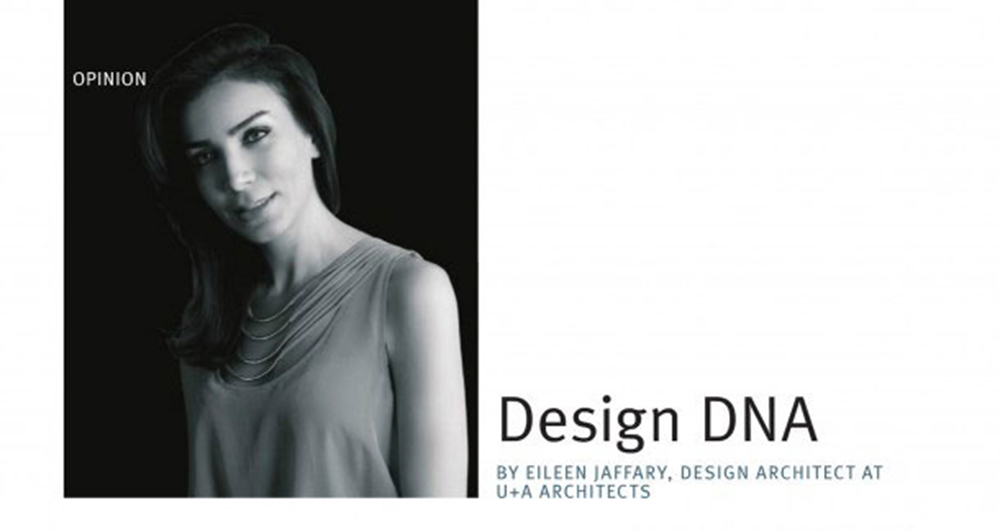Interior Designer Re-Defines The Design Guidelines
In its last issue of year 2013, Commercial Interior Design magazine published an article by the Interior Designer at U+A Architects; Eileen Jaffary.In this article, Eileen reflected her opinion on the commonly ignored Interior Design Guideline what she refers as “Design DNA”.
Design DNA
Every day an indefinite number of new designs are initiated by architects and interior architects alike. Comparatively, critics voice out their opinios often in tandem with the projects’ progress suggesting acceptable ways or rules to improve the deisgn. However, as we all know, so much depends on the taste of the individual designer and creator. Their philosophies, creativity and drive to stmp their work arethe driving forces of inception in design. General rules such as proportion, harmony and balance can be referred to as the foundation to every design but still the same questions remain: what about the more intuitive rules and guidelines? What about the design DNA?
Design DNA starts at the primary stage of every project. In the manner that we were taught back in architecture school, the design concept begins with the creative process of an idea. Once the idea manifests in the mind of the designer, he or she defines the concept, creates the design codes and ultimately comes with the design DNA.
In later stages, the designer should ensure that the design DNA is correctly applied in all design aspects. These design genetics or coding, per se, eventually form and shape the unique identity of the building. Its architectural form, façade details, lighting and finishes all reflect the codes and their arrangements.
I believe that often the tie to the design DNA is lost within different stages of a project. Sometimes it happens as a result of ignorance or the involvement of different designers joining the design development team who are unfamiliar with the design roots of the project. Whichever the case, the outcome is the same: an incoherent design that rejects any form of dialogue between its components.
An “alienated” interior design that reflects multiple characteristics and mixed design identities denies its inhabitant from any experience of a unique and yet unified design throughout one project.
As an interior architect, who strongly believes that the interior design of any building should be a true reflection of the general concept with the needs to have ties to its architecture, I persistently advise my team members to follow and respect the design DNA of every project. As an example, I refer to the lobby interior design we completed for the Hyatt hotel in Abu Dhabi at ADNEC, Capital gate tower.
The initial concept designer of the tower’s Architecture (U+A’s Chief designer Pierre Martin Dufresne) led the interior design team by following the same design concept as the tower itself. The DNA as a result was unified between the architecture and interior seamlessly. The concept of Capital Gate’s architecture stems from its location along the historical road previously used for parading national defense’s latest security equipment, both on land and water. The latter being ships displayed along its canal front informed the tower’s concept as a dialog between ship and the strong forces of water hitting its hull. The water;s sheer energy may push onto the ships but the hull resists the force of the wave. Since fluidity and movement can be referred to as the primary concept, we followed the same design as well. The introduction of a dynamically formed chandelier in the middle which physically expresses the clash between the water and hull, as well as the usage of aqua marine as the interior colour palette, and moreover interior finishes such as wood to remind the visitor if the interior of the ship are a few of DNA driven interior design applications.
It is without a doubt that we should encourage all interior professionals to pay more attention to this important design guideline and I believe it will definitely result in more interesting and innovative interior design solutions.




